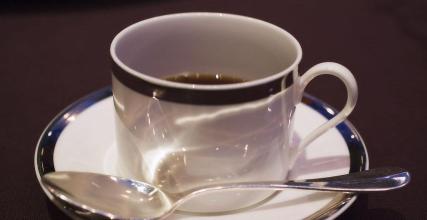Introduction to the basic knowledge of coffee blending there are several methods of blending
The knowledge of roasting and blending of coffee is widespread, and people need to combine coffee from different places for several different purposes. The ideal goal, of course, is to piece together a coffee that tastes better than any of them. But generally speaking, Arabica coffee from a single origin is enough to make coffee that tastes good for export; it has a delicate flavor, a soft taste and a sweet aftertaste. So there is no need for "blending" (that is, putting together coffee from different places). The main commercial purpose of blending coffee is to reduce costs and mix coffee with coffee that is not very good. In order to improve sales profits. There is also a possible purpose, that is to put together a unique taste, the unique taste of a brand. Customers who like this taste have to go to this factory to buy it, but can't get it from other suppliers. Another advantage of this is that the taste of the blended coffee will not change no matter how the taste of the coffee from different years changes in some places. We are here not to worry about other possible commercial purposes, but to focus on the blending aimed at improving the taste and quality of the coffee. Before blending any coffee, you should first understand the taste characteristics of all kinds of coffee, and at least make it clear in your heart that the taste of the kind of coffee you want to mix can not be achieved by any single coffee. It would be a pity if the blended coffee doesn't taste better than one or more of them. It would be better not to match. If you use some pretty good quality coffee for blending, the result is likely to be so. The average blended coffee does not need to use more than five kinds of coffee beans. Because if there are too many kinds of coffee beans, the situation can be very complicated. Almost only a very special expert would not be confused by so many different coffee beans.
Blending coffee without the need for blending requires expert ability to understand the taste characteristics of each kind of coffee, to know what the taste of the coffee you want to mix is like, and how to achieve that flavor. but in any case, you can't regard the blended coffee as an advanced form of coffee. As mentioned earlier, the actual situation is often just the opposite. Personally, I prefer individual coffee, especially if it is roasted properly, it is the most beautiful. In my opinion, even a more ordinary coffee is better than a very successful coffee. Why? Because this kind of coffee is from the farm through a series of complex processes to the coffee cup, which is not affected by any human factors. When I drink that cup of coffee, I always think about how the whole process went before this cup of coffee appeared to me. I always look forward to meeting the farm or environment where this coffee is grown in this way.
Bake first and then mix, or match first and then bake? A lot of people ask me, is it baking and then matching, or is it first matching and then baking? Which way is better? If you have a definite recipe, of course the easiest way is to put different coffee beans together and then bake them together. But if you are trying and comparing different ingredients and proportions, you certainly want to bake all kinds of coffee beans before trying. Otherwise, every time you change the composition and proportion of the mix, you need to bake it again. For "Vienna Coffee" (Melange) blending and small test blending, it is more suitable for independent roasting. For example, when a small amount of "Rob Coffee" needs to be added in a trial mix, the required "Rob Coffee" is the most suitable for independent roasting. Some coffee is denser or changes in volume before and after roasting, and these beans are roasted differently from "washed" Arabica coffee. Arabica Coffee processed by the "drying method" is baked at a higher temperature. But in most cases, all kinds of coffee beans can be roasted together. My advice is: in general, all coffee beans can be roasted together. You need to consider using independent baking only when the baking effect is not ideal. At this time, independent baking can usually achieve better results. Especially for drum roaster, a relatively moderate baking degree can be found in general. But some individual coffee beans are not easy to bake evenly. For example, Yemeni coffee, Ethiopian DP coffee beans, and so on. Uneven baking color is not a defect. Only "washed" Arabica coffee needs to be roasted evenly.

Important Notice :
前街咖啡 FrontStreet Coffee has moved to new addredd:
FrontStreet Coffee Address: 315,Donghua East Road,GuangZhou
Tel:020 38364473
- Prev

The baking methods of Italian mixed beans are divided into raw and cooked ones.
A single product is a batch of coffee from a single variety of producing areas. Italian beans are baked in two ways: raw beans and cooked beans. Raw beans are mixed before baking and then baked. Cooked beans are mixed in proportion with coffee beans that have already been baked, usually the roaster's more mainstream and advocated way is to fight, because coffee beans blend with each other in the roasting process.
- Next

Can strong personality be combined with mild and smooth coffee beans?
Another theory is to mix different coffees according to their performance in cups with different roasting degrees. No matter which type of coffee it belongs to, it has different flavor performance under different roasting degrees, and even the coffee with strong personality will have a strong personality under the deeper roasting degree, while the mild coffee with the least personality is not obvious at the shallow roasting degree.
Related
- Does Rose Summer choose Blue, Green or Red? Detailed explanation of Rose Summer Coffee plots and Classification in Panamanian Jade Manor
- What is the difference between the origin, producing area, processing plant, cooperative and manor of coffee beans?
- How fine does the espresso powder fit? how to grind the espresso?
- Sca coffee roasting degree color card coffee roasting degree 8 roasting color values what do you mean?
- The practice of lattes: how to make lattes at home
- Introduction to Indonesian Fine Coffee beans-- Java Coffee producing area of Indonesian Arabica Coffee
- How much will the flavor of light and medium roasted rose summer be expressed? What baking level is rose summer suitable for?
- Introduction to the characteristics of washing, sun-drying or wet-planing coffee commonly used in Mantenin, Indonesia
- Price characteristics of Arabica Coffee Bean Starbucks introduction to Manning Coffee Bean Taste producing area Variety Manor
- What is the authentic Yega flavor? What are the flavor characteristics of the really excellent Yejasuffi coffee beans?

